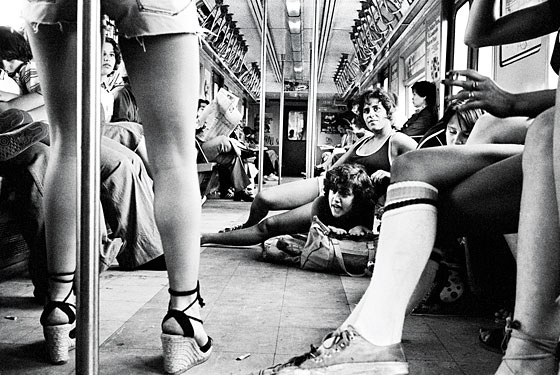
We all tend to think of the golden age as the twenty years or so just after the Second World War, when New York really was both the cultural capital of the world and a great middle-class town. Yet those years were maybe not so great if you were, say, female, black, Hispanic, gay, lesbian, or anything much but a straight white guy. Columbia still had quotas restricting the number of Jews admitted, and Mario Cuomo couldn’t get a job at a white-shoe law firm.
So … how about 1977? Well, maybe the blackout riot and the Son of Sam make that a polemic too far. But let’s say 1978, then. Seriously.
It was a terrific interval. The preoccupation with the suburbs had peaked, and people were flowing back into the city—often young, creative, interesting people. It was possible to have entire conversations that did not involve real estate or bedbugs. The fiscal crisis was just past, recreational drugs were easy to get, and everyone was having sex all the time.
We still did everything collectively. You wanted to hear music? You went to a record store, where a smug student in black jeans told you about every group, in particular how much he liked “their earlier, better stuff.” You wanted to hear live music? You went to about a five-block square of the Village where every kind imaginable was available. Same for dancing. You wanted to see a great movie? You consulted one of the foldout sheets everyone had tacked above their desks or in their kitchen, from the revival houses, blessed be their names—the Thalia, the New Yorker, the Regency, Theatre 80 Saint Marks, the Bleecker Street Cinema. You made it a date or went with friends, and afterward, everybody talked about it.
Movies rivaled literature and politics as topics of conversation—but we also talked about art, the theater, magazines, photography, nuclear proliferation, South Africa. Imagine talking about art! Imagine there being a theater! You could even go see it, because the city was fantastically cheap. You could go watch the terrific circus up at Yankee Stadium for just $2.50 and buy your ticket at the window on your way in. You could have the best Indian food you’d ever tasted for $4 a plate, bring your own wine, and all share a roomy Checker cab home.
Yes, there were bad things then too. Murdoch’s Post was already defining sleaziness down. Ed Koch had just beaten Mario and Bella to become mayor with an ugly, pro–death-penalty campaign. I don’t want to romanticize the grime or the crime, or the poverty, but those things have been and will be with us always, at least until the city is one big lumpen condo. Whereas the city of 1978 was accessible to all, open to all. If that created problems, it was also a place where everyone had a stake, where everyone was a full citizen. Whole neighborhoods were filled with people homesteading, rebuilding the city brick by brick, and as is so often the case, the doing was better than the done. Outsiders feared and despised us, but then, they usually do. There was a glorious defiance to it all: New York at its most New York.